Catalog
Search
211 products
View:
- Selected: 1Areas of use
- Selected: 0Item names
- Selected: 0Manufacturer
- Selected: 0Made in
- Selected: 0Additional
View:
211 products
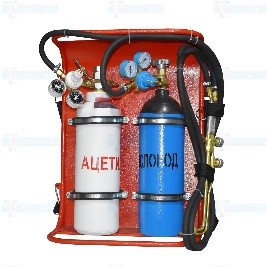
Knapsack installations for manual cutting of steel RU-1 (M1)
from
70 688 ₽
The purpose of this installation is manual cutting of steel sheets and objects of similar hardness (for example, building structures, grilles, doors) using acetylene and oxygen in emergency situations.
The installation is manufactured for climatic performance of UHL category I according to GOST 15150-69, but for operation at ambient temperatures from minus 25 ° C to plus 50 ° C.
Tula-Term
Tula
Produced in: Tula
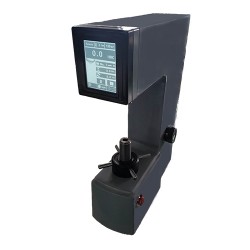
Metolab 202 Rockwell Hardness Tester
METOLAB 202 is a stationary automatic hardness tester designed to measure the hardness parameters of various materials and products on the A, B, C Rockwell scales and the HR15N, HR30N, HR30T, HR45N Super-Rockwell scales. The device has a large and bright display, which displays all the necessary service information, and is also equipped with a built-in mini-printer, so that it is possible to quickly print out the information received on paper. Other features of the METOLAB 202 hardness tester include a fully Russified menu, a wide range of measured values, as well as full compliance of measurements with current standards, including BS.EN 10109 and ISO716.
The stationary METOLAB 202 hardness tester allows you to apply a loading force in 15, 30, 45, 60, 100, 150 kgf and preload 3 kgf, 10 kgf. The device is entered in the State Register of Measuring Instruments of the Russian Federation (GRSI) under the number 65128-16 and comes with a certificate of primary verification (on request).
Regulatory and technical documents establishing requirements for the METOLAB 202 hardness tester:
GOST 8.064-94 GSI. State verification scheme for hardness measuring instruments on the Rockwell and Super-Rockwell scales;
GOST 9013-59 Metals and alloys. Rockwell hardness measurement method. Scales A, B, C;
GOST 22975-78 Metals and alloys. Rockwell hardness measurement method at low loads (Super-Rockwell);
GOST 23677-79 Hardness testers for metals. General technical requirements.
Distinctive features of the stationary METOLAB 202 hardness tester:
All measurements take place in fully automatic mode;
The ability to set the upper and lower measurement limits, audible alarm when the results exceed the set values;
Opportunity to process statistical data – calculation of minimum/average/maximum values, as well as other functions;
Conversion of the obtained results into the Vickers, Brinell and Super-Rockwell scales;
Correction for curvature of cylindrical and spherical parts;
Simple and intuitive interface in Russian.
Basic package of delivery:
Stationary Metolab 202 Rockwell hardness tester;
Indenter with a ball (1.5875 mm) - 1 pc.;
Conical diamond indenter (120°) - 1 pc.;
Flat table SP1 (60 mm);
V-shaped prismatic table SRP1 (40 mm);
Rockwell and Super-Rockwell Hardness Measures;
User Manual.
Metolab
Moscow
Produced in: Moscow
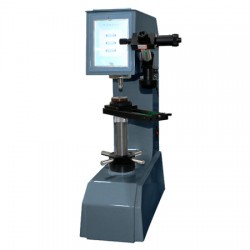
Universal Metolab 703 Hardness Tester
Stationary universal METOLAB 703 hardness tester is a multifunctional device designed to measure the hardness of materials and products on the Rockwell, Brinell and Vickers scales. The device is a modification of the METOLAB 701 and METOLAB 702 meters.
Among the features of the METOLAB 703 hardness tester, the following should be mentioned: a special force sensor for monitoring the applied load; a large and bright color display; software with many functions (including statistical ones – calculation of minimum/average/maximum values, conversion of the results into various scales, automatic switching on of the load, storing data in memory); U-disk for saving and transferring data; creating and editing spreadsheets in Excel format; digital calibration and much more.
Distinctive features of the stationary universal multifunctional METOLAB 703 hardness tester:
A large number of scales for measurements;
Rockwell scales: A, B, C, D, E, F, G, H, K, L, M, P, R, S, V;
Brinell scales: HBW1/5, HBW2.5/62.5, HBW1/10, HBW2.5/15.625, HBW1/30, HBW2.5/31.25, HBW2.5/62.5, HBW10/100, HBW5/125, HBW2.5/187.5;
Vickers scales: HV5, HV10, HV20, HV30, HV50, HV100, HV12;
Multifunctional software in the basic package;
Fully Russian-language device menu, simple and intuitive interface;
Wide range of measured values: 8 – 650 HB; 20 – 93HRA; 20 – 100 HRB; 20 – 70 HRC; 8 – 2900 H;
Load application monitoring using a force sensor;
Large and bright color display;
Creating and editing spreadsheets in Excel format;
U-disk for saving data;
Digital calibration of the device;
Built-in measuring microscope with backlight.
Basic delivery package:
Stationary universal METOLAB 703 hardness tester;
Conical diamond Rockwell indenter (120° angle) - 1 pc.;
Vickers diamond indenter (136° angle) - 1 pc.;
Indenter with 1.5875 mm ball - 1 pc.;
Indenter with 2.5 mm ball - 1 pc.;
Indenter with 5.0 mm ball - 1 pc.;
Indenter with 10.0 mm ball - 1 pc.;
Large flat table 150 mm - 1 pc.;
Medium flat table 60 mm - 1 pc.;
V-shaped table 40 mm - 1 pc.;
Hardness measures - 1 set;
15x microscope - 1 pc.;
2.5x lens - 1 pc.;
5.0x lens - 1 pc.;
User Manual.
Metolab
Moscow
Produced in: Moscow
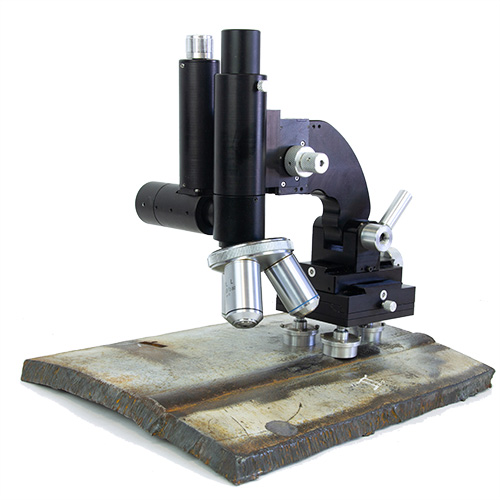
Portable microscope SIAMS MAP-5
● Magnification range: 50 - 800x
● Interchangeable lenses planachromat 5x/0.12, 10x/0.25, 20x/0.40, 40x/0.60 (on request), 50x/0.70, 80x/0.80 with extended working range
● Eyepiece 10x/18mm
● Illuminator: LED illuminator with stabilized source and built-in battery. Lighting adjustment with linear intensity change. The charger is included.
● Microscope tripod with height adjustment with a stroke of 35 mm. The ability to tilt the tripod at an angle of ± 20 degrees forward and backward to take pictures of a curved surface without moving the microscope from the mounting point
● Moving the lens 30x30 mm along the X-Y axes
● Coarse and fine focusing handles
● Strong magnetic fastening on 3 points using hinged supports for mounting on curved convex and concave steel surfaces, including pipe bends with a diameter of 60 mm
● Anti-slip nozzles
● Metal mounting for non-magnetic surfaces with ratchet mechanism
● The base for fixing the microscope in stationary operation
● Bayonet mount for camera
● C-mount mount for video camera
● Transport plug for video output
● A case for carrying a microscope with a camera.
SIAMS
Екатеринбург
Produced in: Ekaterinburg
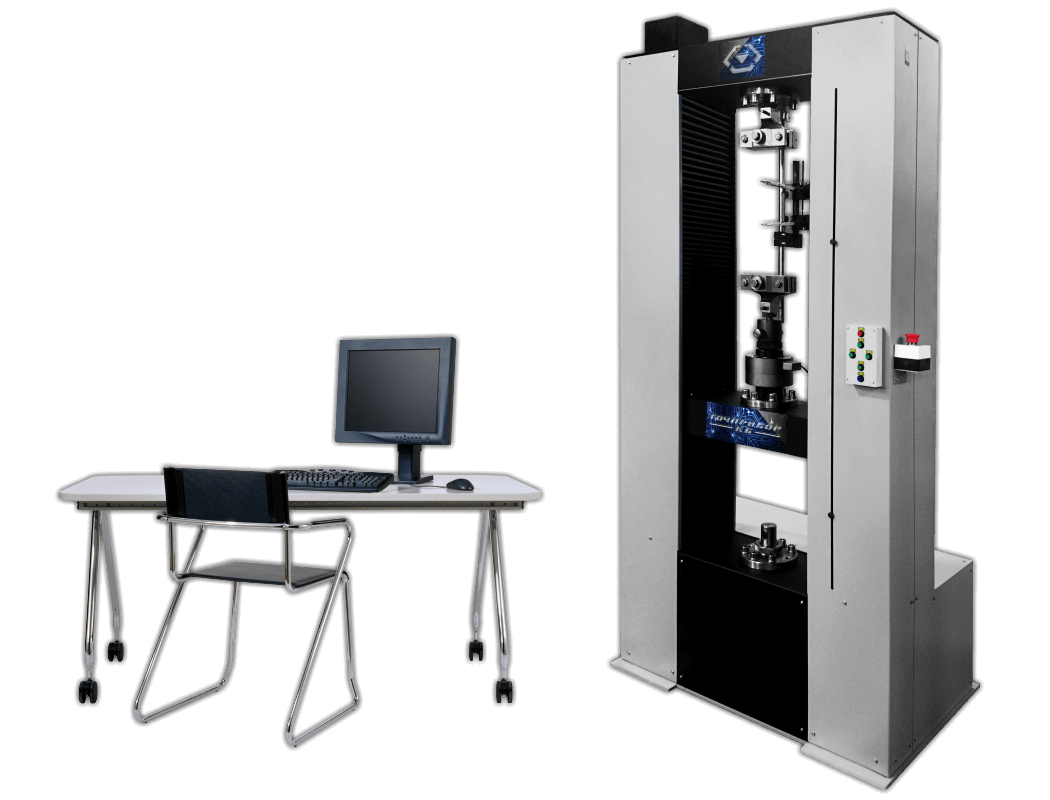
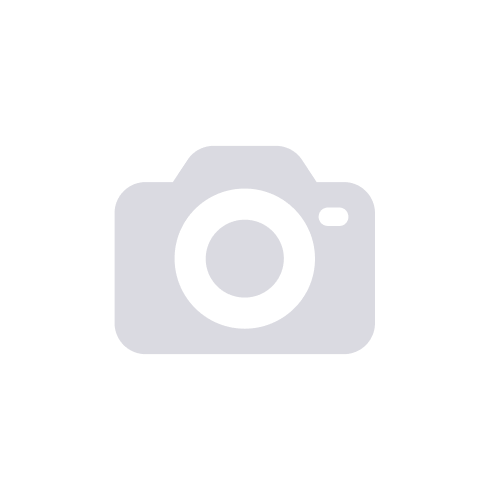

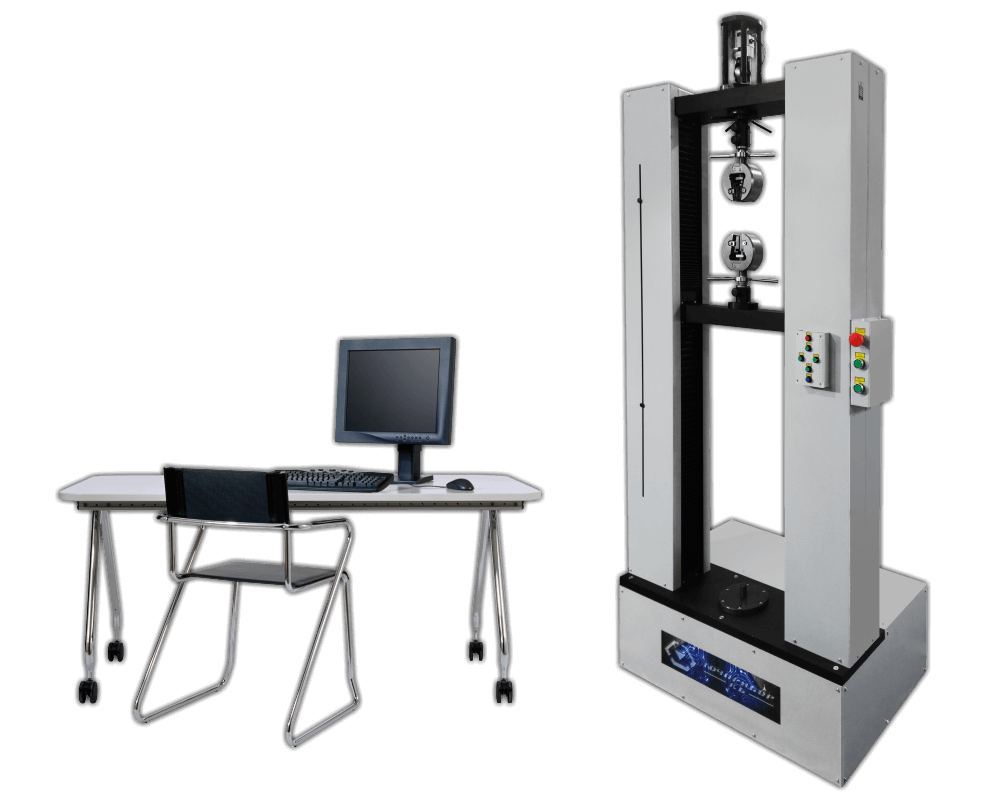
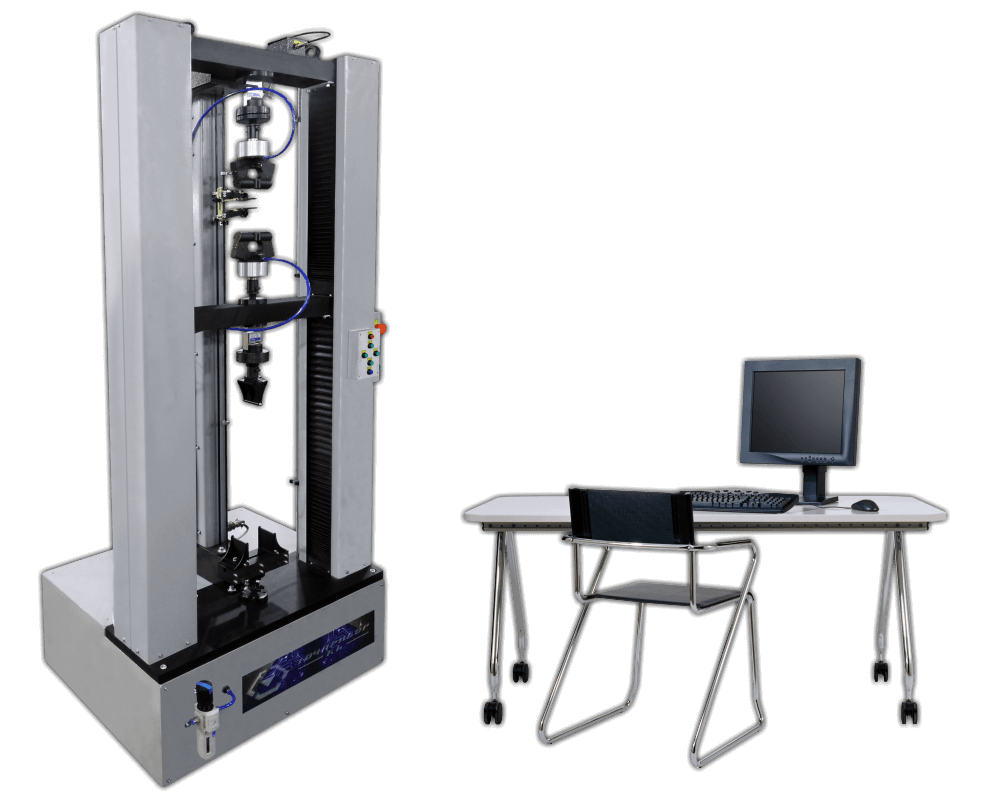
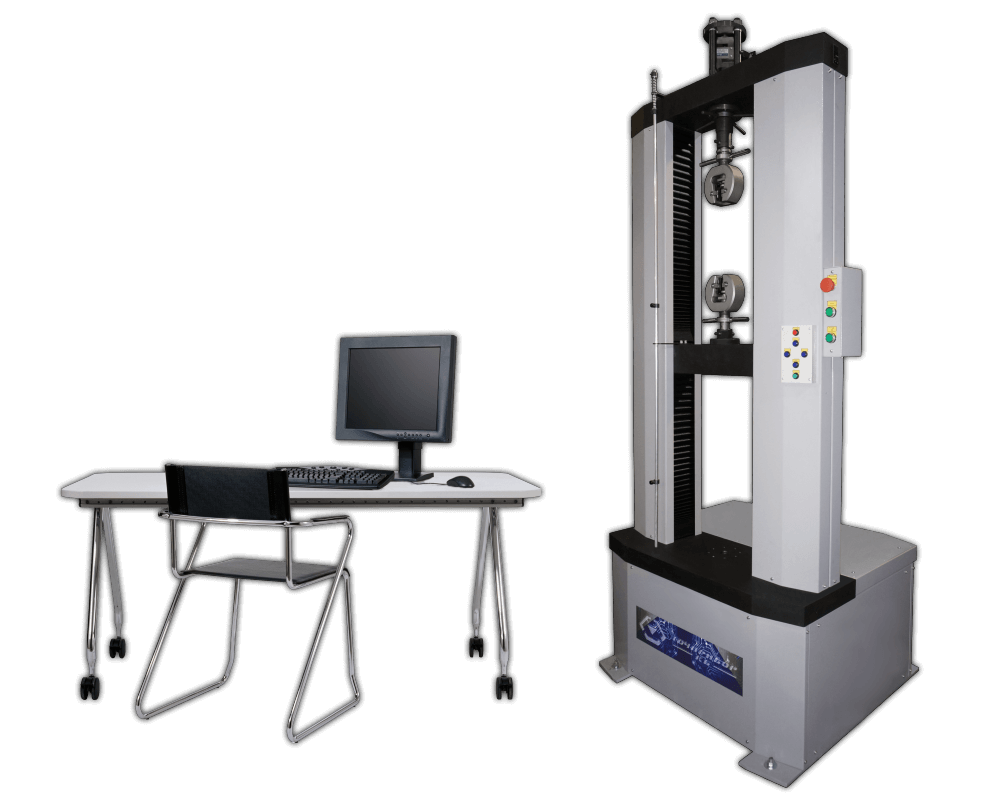
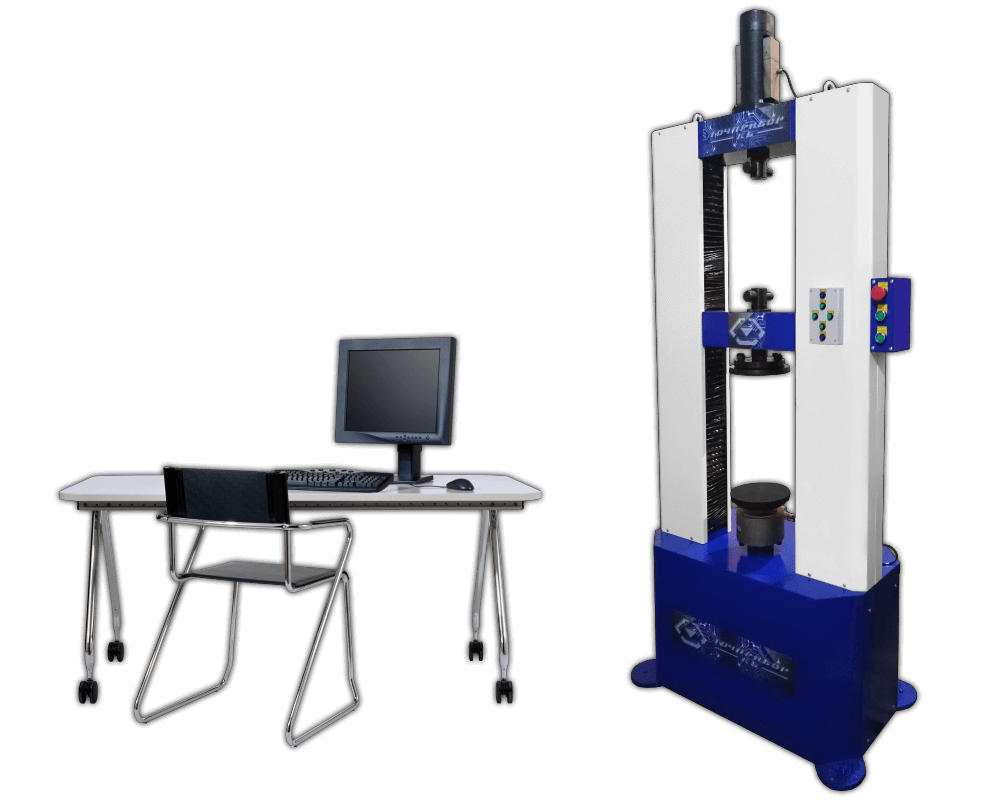
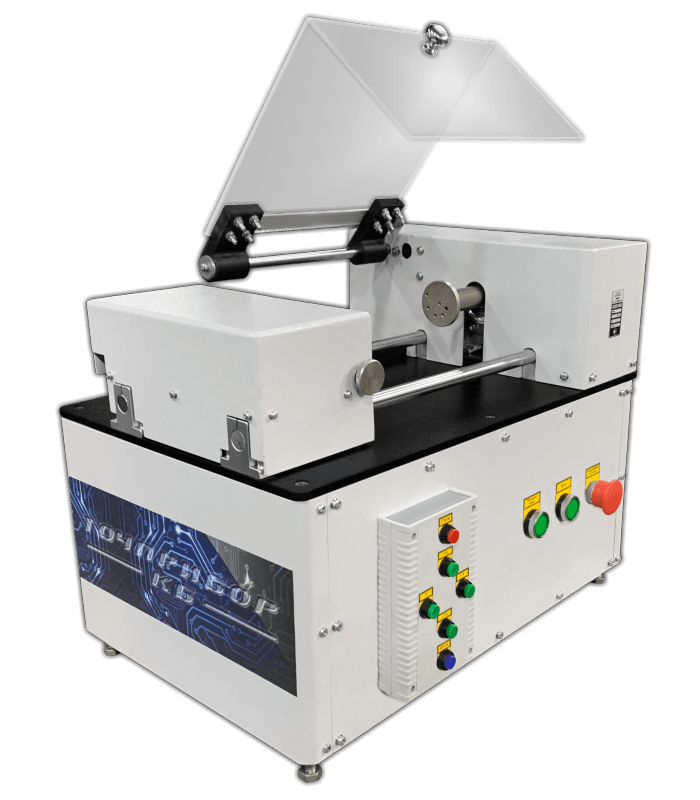
IMK-30 Torsion testing machine
Technical specifications:
Maximum load (torque): 30 N·m
Maximum twisting angle: 50000°
The discreteness of the twisting angle: 0.01°
Twisting angle error: ±0.1°
Torque discreteness: 0.001 N·m
Relative error of torque measurement: no more than 1% in the measurement range from 0.6 to 30 Nm
Torque measurement error: no more than 0.01 N·m in the measurement range from 0 to 0.6 N · m
Maximum rotation speed: 10 rpm
Weight: 150 kg
Overall dimensions (length x width x height): 1000 x 500 x 500 mm
Diameter of the universal testing device: 80 mm
Maximum spring length: 300 mm or more
Tochpribor-KB
Ivanovo
Produced in: Ivanovo
